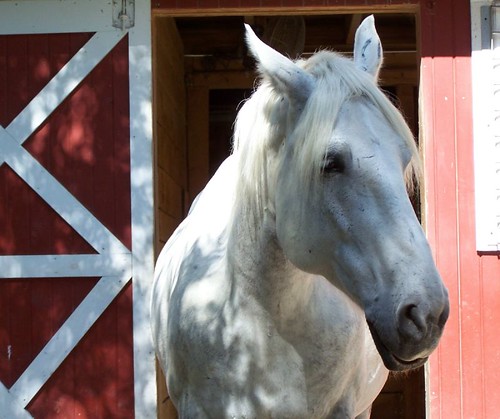There are many people who would suggest that once a horse reaches a certain age, it can no longer be ridden and must be, for want of a better phrase retired. This is no longer true, and with the right care and attention, a horse can still be ridden well into its twenties and may give and get a great experience.

The fact however that the horse could be unpredictable, be in bad habits which could be hard to break, have a history which the rider is unaware of or have an underlying illness or injury which the rider has no knowledge of means that additional care is always advised when riding an older horse, especially if the rider is unfamiliar with him or his history or it is one of a selection of horses for loan.
The following tips could help to protect horse and rider in this situation.
Take it Slowly
Just as you might with any new or unknown horse, take your time getting to know your new friend. By getting to know him in a safe and well populated environment, such as a lesson or a busy yard, you can get to know his behaviours, what he likes and doesn’t like and if he has any unusual triggers for bad or aggressive behaviour. Once you know these then you’re in a much better state to manage them and keep both you and your horse safe.
Take all Usual Precautions
If you wouldn’t normally go off alone, venture onto a new bridle path or do without a piece of equipment then don’t in this case. Your new horse, which isn’t really that new, is still an unknown quantity and until you’ve completely broken him in then it is best not to take any risks which could see either of you injured.
Behaviour Modification
Items such as bits, whips or heavy saddles might be what you’re used to using and might have brought you great success in the past but be very careful when using them on an established horse; especially if you don’t know his history. Without knowing this, the horse could react badly to the use of them (because of an incident in his past) and could injure you, him or anyone in the local area.
Regular Rest
If you were to take an elderly relative out for a walk, the chances are that he or she might need more regular rests than if you were to take out a child or teenager. Your aging horse is exactly the same, and may need much more regular rests for longer periods than you’re used to. This is all part of getting to know him before you venture out and in the end you’ll get to know his particular signs of needing to relax.
Is it Bad Behaviour?
Just as is the case in a young horses for loan, don’t dismiss all bad behaviour as that of a bad horse. Throwing, running or being aggressive may be his way of trying to tell you that he’s tired or in pain so watch for his signals and react accordingly.
Linda Carter is interested in pet care and animals and blogs for Horse and Hound.
